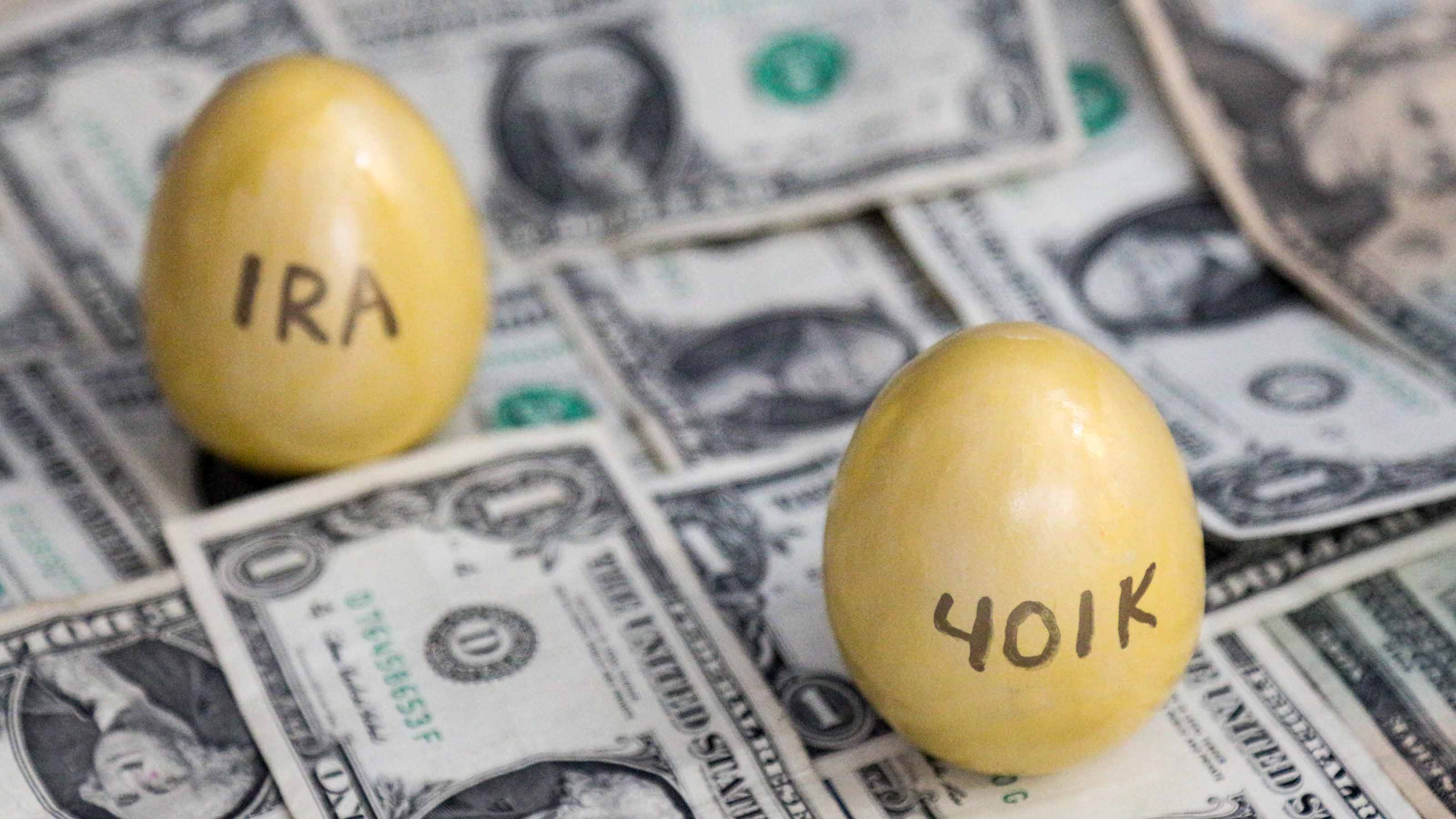Big Changes Coming to the Military Retirement System
Service members may be able to participate in the new blended retirement system, which changes pension guarantees but also provides matching contributions to the Thrift Savings Plan.


Question: I hear there are going to be big changes to the military retirement system soon. How are the pension and retirement-savings options for service members changing, and do I need to make any decisions now?
Answer: You're right—major changes are coming to the military retirement system starting in 2018. You don't need to make any decisions now, but you should start to assess your options if you joined the military between 2006 and 2017 and have a choice between the old and new systems.
Under the current retirement system, service members who stay in the military for 20 years receive a pension worth 50% of their base pay (or up to 75% if they stay for 30 years), starting as soon as they retire from service, with payouts adjusted annually for inflation. But there is no partial vesting; if you stay for fewer than 20 years, you don’t get anything, and fewer than 18% of service members stay for 20 years.
From just $107.88 $24.99 for Kiplinger Personal Finance
Become a smarter, better informed investor. Subscribe from just $107.88 $24.99, plus get up to 4 Special Issues

Sign up for Kiplinger’s Free Newsletters
Profit and prosper with the best of expert advice on investing, taxes, retirement, personal finance and more - straight to your e-mail.
Profit and prosper with the best of expert advice - straight to your e-mail.
The new “blended retirement system” reduces the guaranteed income available after 20 years, but it also provides matching contributions to your Thrift Savings Plan (TSP), which you can keep after just two years of service.
Under the new system, if you stay in the service for at least 20 years, you can get a pension worth up to 40% of your base pay (or up to 60% if you stay at least 30 years), with payouts that are adjusted for inflation. You’ll also get extra money in your Thrift Savings Plan: an automatic contribution of 1% of your base pay to the TSP after 60 days of service, and matching contributions for the next 4% of your pay. That’s up to 5% each year in free money that you can keep in your plan after completing two years of service.
If you joined the military from 2006 through 2017, you will have from January 1, 2018, until December 31, 2018, to opt into the new system. (Service members who joined the military before 2006 will still be covered under the old retirement system, and those who join in 2018 or later will automatically be covered under the new system.) If you don’t do anything, you’ll remain in the current retirement system. For more information about the new system, see the Department of Defense’s Blended Retirement System Web page.
Also decide whether to make traditional or Roth contributions to your TSP. Traditional TSP contributions reduce your taxable income now and grow tax-deferred for retirement, but you’ll have to pay income taxes on the gains when you withdraw the money. With Roth TSP contributions, you forgo the current tax break but can withdraw the earnings tax-free in retirement. Many members of the military are in a lower tax bracket while serving than they are after they leave the service, especially if they’re receiving a tax-free housing allowance and tax-free income while deployed to a combat zone. For them, the Roth TSP is usually the best option, says Patrick Beagle, a certified financial planner in Springfield, Va., and retired Marine helicopter pilot. And if you contribute tax-free income to a Roth TSP while deployed, the money both goes in tax-free and comes out tax-free in retirement.
Profit and prosper with the best of Kiplinger's advice on investing, taxes, retirement, personal finance and much more. Delivered daily. Enter your email in the box and click Sign Me Up.

As the "Ask Kim" columnist for Kiplinger's Personal Finance, Lankford receives hundreds of personal finance questions from readers every month. She is the author of Rescue Your Financial Life (McGraw-Hill, 2003), The Insurance Maze: How You Can Save Money on Insurance -- and Still Get the Coverage You Need (Kaplan, 2006), Kiplinger's Ask Kim for Money Smart Solutions (Kaplan, 2007) and The Kiplinger/BBB Personal Finance Guide for Military Families. She is frequently featured as a financial expert on television and radio, including NBC's Today Show, CNN, CNBC and National Public Radio.
-
 I'm want to give my 3 grandkids $5K each for Christmas.
I'm want to give my 3 grandkids $5K each for Christmas.You're comfortably retired and want to give your grandkids a big Christmas check, but their parents are worried they might spend it all. We ask the pros for help.
-
 If You're Not Doing Roth Conversions, You Need to Read This
If You're Not Doing Roth Conversions, You Need to Read ThisRoth conversions and other Roth strategies can be complex, but don't dismiss these tax planning tools outright. They could really work for you and your heirs.
-
 Could Traditional Retirement Expectations Be Killing Us?
Could Traditional Retirement Expectations Be Killing Us?A retirement psychologist makes the case: A fulfilling retirement begins with a blueprint for living, rather than simply the accumulation of a large nest egg.
-
 Catch-Up Contributions to Retirement Accounts Boosted By SECURE Act 2.0
Catch-Up Contributions to Retirement Accounts Boosted By SECURE Act 2.0Americans approaching retirement age can now squirrel away more money in IRAs, 401(k)s, and other retirement accounts.
-
 When RMDs Loom Large, QCDs Offer a Gratifying Tax Break
When RMDs Loom Large, QCDs Offer a Gratifying Tax BreakSend money directly to charity from your traditional IRA, and you won’t owe taxes on the amount you donate. It’s a win-win!
-
 Save More for Retirement in 2023 Thanks to Higher IRA and 401(k) Contribution Limits
Save More for Retirement in 2023 Thanks to Higher IRA and 401(k) Contribution LimitsIf you're saving for retirement, you can contribute a lot more to an IRA, 401(k), or other retirement account in 2023.
-
 Traditional IRA Contribution Limits for 2022
Traditional IRA Contribution Limits for 2022traditional IRA Once again, retirement savers won’t be able to contribute more to traditional IRAs this year, but changes to how they work may be coming.
-
 Trading Options for Your 401(k)
Trading Options for Your 401(k)Employee Benefits About 40% of companies offer self-directed brokerage accounts in their 401(k) plans, giving participants more investing options.
-
 8 Thrift Savings Plan Mistakes: What Not to Do With Your TSP
8 Thrift Savings Plan Mistakes: What Not to Do With Your TSPretirement planning Many federal workers saving for retirement in TSPs get tripped up by these common pitfalls. To help maximize your own savings, make sure you steer clear of these eight mistakes.
-
 Thrift Savings Plan Contribution Limits for 2021
Thrift Savings Plan Contribution Limits for 2021Financial Planning Federal workers and military personnel can save the same amount in their TSP retirement accounts this year as 2020.
-
 How Much Can You Contribute to the Thrift Savings Plan for 2020?
How Much Can You Contribute to the Thrift Savings Plan for 2020?retirement Federal workers and military personnel can save more in their TSP retirement accounts in 2020.